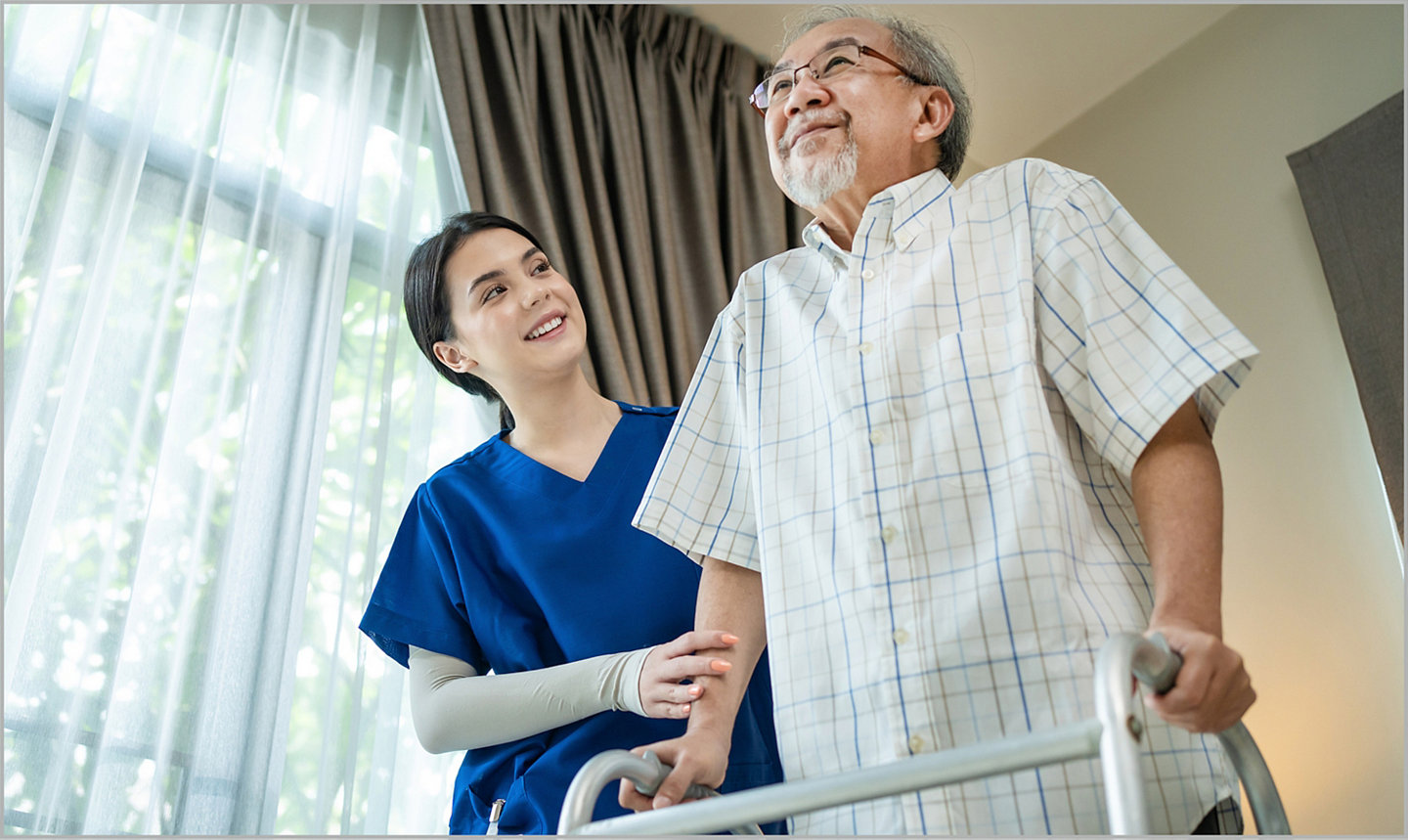Urban community hosptial lowers fall rate 53% and improves outcome with an early mobility program
27-Jul-2023
Dramatic decrease in fall rate after implementing early mobility program
Early and progressive mobility programs for hospitalized adults have been demonstrated to improve patient outcomes, however, implementation and sustainability can vary based on the healthcare organization. The complications related to immobility for hospitalized older patients are well documented. These include:1
- Decline in function
- Falls
- Delirium
- Deep vein thrombosis
- Pressure injury
- Pneumonia
- Urinary tract infection
- Increased length of stay
- Reduced health-related quality of life after discharge
Early Mobility (EM) programs have been proven to improve patient outcomes.2 It’s also been proven that Safe Patient Handling and Mobility (SPHM) programs can help reduce healthcare worker injuries.2 Integrating an early progressive mobility program with a safe patient handling program can benefit both patients and healthcare workers.

The journal Nursing Management recently published an article that featured an interdisciplinary approach to safe patient handling and mobility.3 It incorporated early and progressive mobility in a small 133-bed urban community hospital in the western US. The program included skilled mobility technicians, an established safe patient handling program, and an enhanced Beside Mobility Assessment Tool (BMAT).
The Chief Nursing Officer (CNO) championed this new interdisciplinary safe patient handling and mobility model for a variety of reasons. During the COVID-19 pandemic, nurses had limited resources, patients were spending more time in bed, safe patient handling technologies that were available were not being utilized, and patient outcomes began to decline. The CNO noted an increase in patient falls and hospital-acquired pressure injuries.
The healthcare organization hired an external vendor to provide mobility technician services for nursing staff from February 2020 through February 2022. The formal EM Program was accomplished by mid-2021. The vendor provided training to all frontline nursing staff. Education included ergonomics and how to use their safe patient handling technologies to include mobility as part of their patient standard of care.
Mobility technicians reviewed patient assessment information from the nurse, then they completed the BMAT and determined which safe patient handling technology was appropriate to safely mobilize the patient. In addition to the EM technicians and their preexisting safe patient handling program, the facility created a visual tool illustrating the appropriate early mobility interventions and recommended safe patient handling technologies based on the patient’s BMAT score.
To promote employee engagement, mobility technicians provided multiple training sessions for the nursing staff. A SPHM Committee was created to share best practices and lessons learned. Additionally, two employee engagement surveys were used to measure staff engagement.
This quality improvement project used a retrospective review of patient and staff outcomes from the year prior to implementation. Data was based on fiscal year July 1- June 30. They reviewed both FY2021 and FY2022. Outcomes for patients and staff included: 1) fall rates, 2) incidence of sacral and heel pressure injury 3) healthcare worker injury from patient handling and 4) staff engagement. In FY2022, they demonstrated a 53% reduction in fall rates down to 1.402 fall per 1,00 occupied bed days. Their hospital-acquired sacral and heel pressure injuries decreased 25%. Patient-handling injuries decreased from 12 in 2019 to 3 in 2022. Associate engagement scores in 2021 reported 82% highly engaged and in 2022 engagement stayed high at 80%.
This quality improvement program demonstrated improvements in patient quality indicators (falls and pressure injuries) and reduction in patient handling injuries and improved associate engagement. This model is an excellent example of a successful EM program in a small community hospital.
To read the article, click here.
To learn more about products that can help address the risk factors for pressure injury and healthcare worker injury, click here.
1. Wu T, et al., The association between major complications of immobility during hospitalization and quality of life among bedridden patients: A 3 month prospective multi-center study, PLOS ONE, Oct 2018;13(10):1-14.
2. Wyatt S, Meacci K, Arnold M, Integrating Safe Patient Handling and Early Mobility: Combining Quality Initiatives, Journal of Nursing Care Quality, 2019;35(2):130-34.
3. Gabele D, Mendez S, Giuliano K, Early and progressive mobility in a community hospital: A new interdisciplinary safe patient handling and mobility model, Nursing Management, March 2023;54(3):22-7.
SAGE-PVN-COMM-739950_REV-0_en_us

